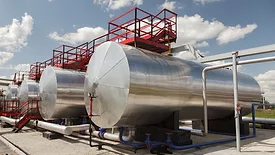Drilling Industry News
A blend of fieldwork and research has helped develop a more comprehensive understanding of the industry's operations and challenges.
Read More
Offshore Drilling Makes a Comeback as U.S. Shale Growth Slows
Offshore projects come with major upfront investments, longer development timelines, and greater exposure to environmental and political risk.
Read More
Canada’s Drilling Activity Expected to Rise Slightly in 2026
The prediction comes as new energy policies come into effect
Read More
Europe’s Oil and Gas Revival Raises Questions About Energy Security, Climate Goals, and U.S. Trade
The move comes in the wake of the 2022 Russian energy crisis
Read More
Silver-Line® PVC Well Casing and Drop Pipe
Designed to withstand different well depths and soil or rock conditions
Read More
California Water Leaders to Convene in San Diego for ACWA Conference
This year’s conference will explore a range of timely topics, including the future of the Colorado River.
Read More
Titan Mining Pushes Toward U.S. Graphite Independence
They are doing so with strong project results and expanded federal backing
Read More
Silver Named Critical Mineral as Apollo Pushes Forward on Major U.S. Project
Federal designation could streamline development of Apollo Silver’s Calico Project in California
Read More
Desalination and Water Reuse Surge into Record-Breaking Growth
New IDRA Handbook highlights surge in capacity and investment amid rising water scarcity
Read More
EPA Responds to Claims Over “Forever Chemical” Pesticides with Clarification and Context
Agency says approved compounds are not PFAS, while critics call for clearer oversight amid rising public concern
Read More
Dig deeper into the drilling and water supply industry!
Build your knowledge with The Driller, covering the people, equipment and technologies across drilling markets.
SIGN UP NOWCopyright ©2025. All Rights Reserved BNP Media.
Design, CMS, Hosting & Web Development :: ePublishing







.webp?height=168&t=1764644298&width=275)


